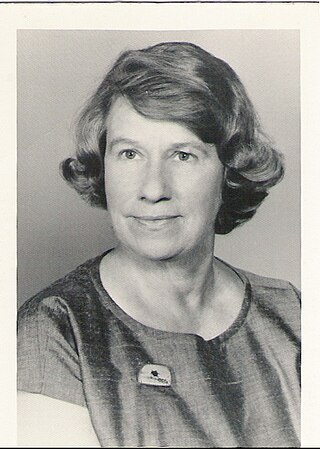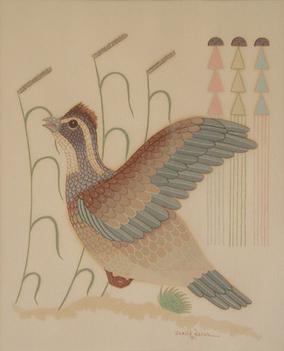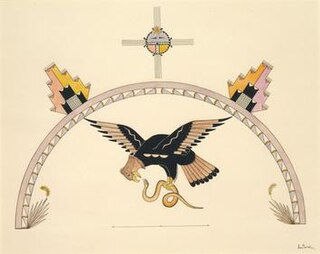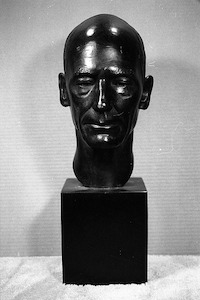
The Taos art colony was an art colony founded in Taos, New Mexico, by artists attracted by the culture of the Taos Pueblo and northern New Mexico. The history of Hispanic craftsmanship in furniture, tin work, and other mediums also played a role in creating a multicultural tradition of art in the area.

Dorothy Dunn Kramer was an American art instructor who created The Studio School at the Santa Fe Indian School.

Helen Hardin was a Native American painter. She started making and selling paintings, participated in the University of Arizona's Southwest Indian Art Project and was featured in Seventeen magazine, all before she was 18 years of age. Creating art was a means of spiritual expression that developed from her Roman Catholic upbringing and Native American heritage. She created contemporary works of art with geometric patterns based upon Native American symbols and motifs, like corn, katsinas, and chiefs. In 1976 she was featured in the PBS American Indian artists series.

Pablita Velarde born Tse Tsan was an American Pueblo artist and painter.

Pop Chalee, also known as Merina Lujan, was an American painter, muralist, performer, and singer. In 2021, she was inducted into the National Cowgirl Museum and Hall of Fame.

Gerald Nailor Sr. was a Navajo Studio painter from Picurís, New Mexico. Beginning in 1942, he was commissioned to paint the history of the Navajo people for a large mural at the Navajo Nation Council Chamber, which has been designated a National Historic Landmark.
Quincy Tahoma (1921–1956) was a Navajo painter from Arizona and New Mexico.

Velino Shije Herrera, also known as Ma Pe Wi, was a Zia Pueblo Indian painter.

Tonita Peña born as Quah Ah but also used the name Tonita Vigil Peña and María Antonia Tonita Peña. Peña was a renowned Pueblo artist, specializing in pen and ink on paper embellished with watercolor. She was a well-known and influential Native American artist and art teacher of the early 1920s and 1930s.

Awa Tsireh, also known as Alfonso Roybal and Cattail Bird, was a San Ildefonso Pueblo painter and artist in several genres including metalwork. He was part of the art movement known as the San Ildefonso Self-Taught Group. His work is held by several museums, including the Smithsonian American Art Museum.

Gerónima Cruz Montoya (Potsunu) was an Ohkay Owingeh Pueblo artist and educator from New Mexico. She taught Native American artists at the Studio at the Santa Fe Indian School.
Eva Mirabal, also known as Eah-Ha-Wa (1920–1968) was a Native American painter, muralist, illustrator, and cartoonist from Taos Pueblo, New Mexico. Her primary medium was gouache, a type of watercolor.
Louise Crow was an American painter best known for her portraits of Pueblo Indians. She worked in oils and watercolors, and with a wide variety of subjects including landscapes, Northwest scenes of rugged mountains, seascapes, and portraits of such historical figures as Ezra Meeker, a pioneer who traveled the Oregon Trail. Her technique was crisp and clean and feels contemporary despite her working nearly one hundred years ago. Much of her work, which has been a challenge to locate, concentrated on California and Southwest themes. Institutions that own her include the New Mexico Museum of Art, the Museum and History and Industry and the Washington State Governor’s Mansion.

Elizabeth Willis DeHuff (1886–1983) was an American painter, teacher, playwright, and children's book writer. She was an important contributor to the development of Native American easel painting in the 1920s and 1930s. DeHuff is also a children's book author who writes predominantly utilizing Native American folklore and themes. Among these books are Blue-Wings-Flying and TayTay's Tales. In writing these children's books, and other works by her like Kaw-eh and Say the Bells of Old Missions: Legends of Old New Mexico Churches that are not necessarily children's books, DeHuff is instrumental in documenting Native American folklore and providing authenticity in the telling of it. Overall, she wrote 65 works in 118 publications. These other works included non children's books and periodical articles Native American, Hispanic, and New Mexico subjects.
Joe Hilario Herrera, was an American Pueblo painter, teacher, radio newscaster, politician, and a Pueblo activist; from a mixed Cochiti and San Ildefonso background. He was the son of the artist Tonita Peña, and had trained at the Santa Fe Indian School.
Romando Vigil, also known as Tse Ye Mu was a Native American self-taught painter and a leader in the San Ildefonso school. He briefly worked for Walt Disney Studios as a painter and illustrator in the 1950s.

Waldo Mootzka (1903–1940) was a Hopi watercolor artist.

Rufina Vigil, also called Sah Wa, was an Puebloan-American painter from the Tesuque Pueblo tribe, part of the Eight Northern Pueblos. Active in the 1930s, she studied under Dorothy Dunn at the Santa Fe Indian School. At one time she worked as a drafter in Los Alamos, New Mexico. Vigil's paintings depict Tesuque life, including women gathering guaco and firing pottery. Her 1936 painting Mass at Fiesta is one of the earliest depictions of Catholic Church rituals by an indigenous North American painter.

Oqwa Pi also known as Abel Sanchez (1899–1971), was a San Ildefonso Pueblo painter, muralist, and politician. Pi was known for his brightly colored paintings. He served as governor of the San Ildefonso Pueblo for six terms.

Kenneth M. "Chap" Chapman (1875–1968) was an art historian, arts administrator, anthropologist, writer, teacher, and researcher of Native American art and culture in Santa Fe, New Mexico. The New Mexico Archive said of Chapman: "An advocate of Indian arts, his endeavors led to the revitalization of Pueblo pottery, the founding of the first Indian Fair and the Indian Arts Fund."















